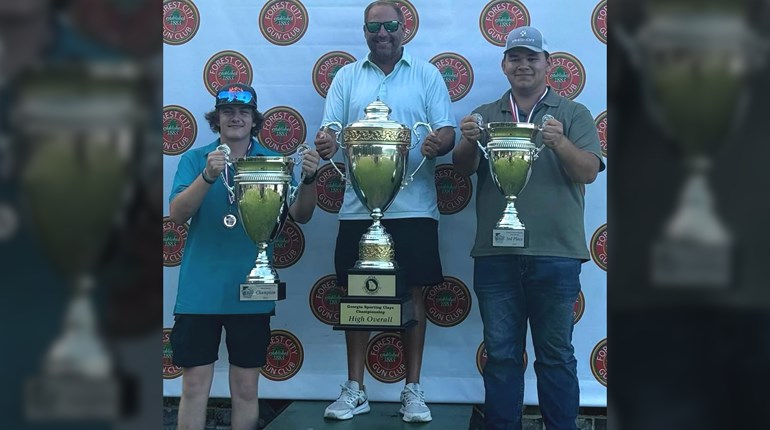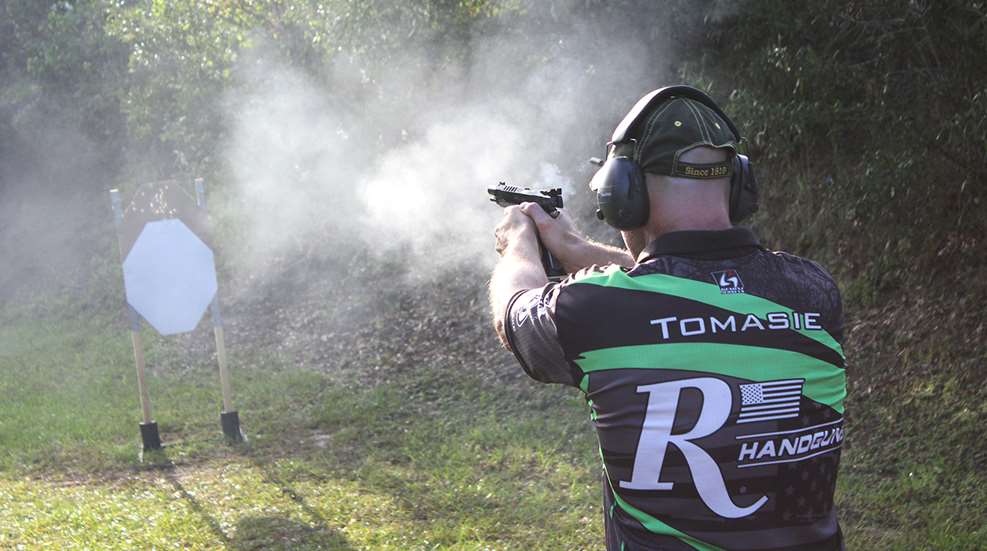
Remington Arms Team Captain Travis Tomasie has a well-earned reputation in the action shooting world as one of its fiercest competitors, while simultaneously being one of the nicest and approachable people in the sport. Tomasie holds over 100 major shooting titles including several International Practical Shooting Confederation (IPSC) and United States Practical Shooting Association (USPSA) world and national championships. He is a nine-year veteran of the U.S. Army Marksmanship Unit (AMU), and has served as captain of many world championship U.S. national teams.
SSUSA asked Travis a few questions about his shooting career.
Q: Who introduced you to shooting?
A: I was very fortunate in that my dad had been competing in USPSA/IPSC since the mid-1980s. He introduced me to shooting and was essential in building my technical foundation. These were truly incredible experiences to share with him, and I highly recommend that parents pursue the same. Little did I know that my passion for shooting would later develop into my career.
Q: How did you get involved in competitive shooting?
A: Up to that point I'd been heavily focused on soccer, when one day my dad invited me to a USPSA match. He loaned me the gear I needed and everyone at the club was very helpful in assisting me in getting started. I was instantly hooked! Prior to this I enjoyed recreational plinking, but the competition element really opened a whole new world.
It really became an obsession almost immediately. It was routine to spend four hours per day dry firing. By dry fire, I mean everything I could possibly work on with the gun unloaded—trigger press, sight picture, draws, reloads, movement, etc. If I wasn’t at work, school, or sleeping, I was either on the range or dry firing. After eight years of a singular focus, I was fortunate enough to be recruited to the U.S. Army Marksmanship Unit (AMU).
Q: What caused the AMU to recruit you and how did that process work?
This is a very common question I get from aspiring junior shooters, and I must say that there really isn’t a standard operating procedure when it comes to team selection. At that time, I was placing in the top five at the USPSA Open and Limited National Championships, and had won several regional tournaments. The AMU Action Shooting Team had a civilian coach back then, and I believe he took notice of me from these performances.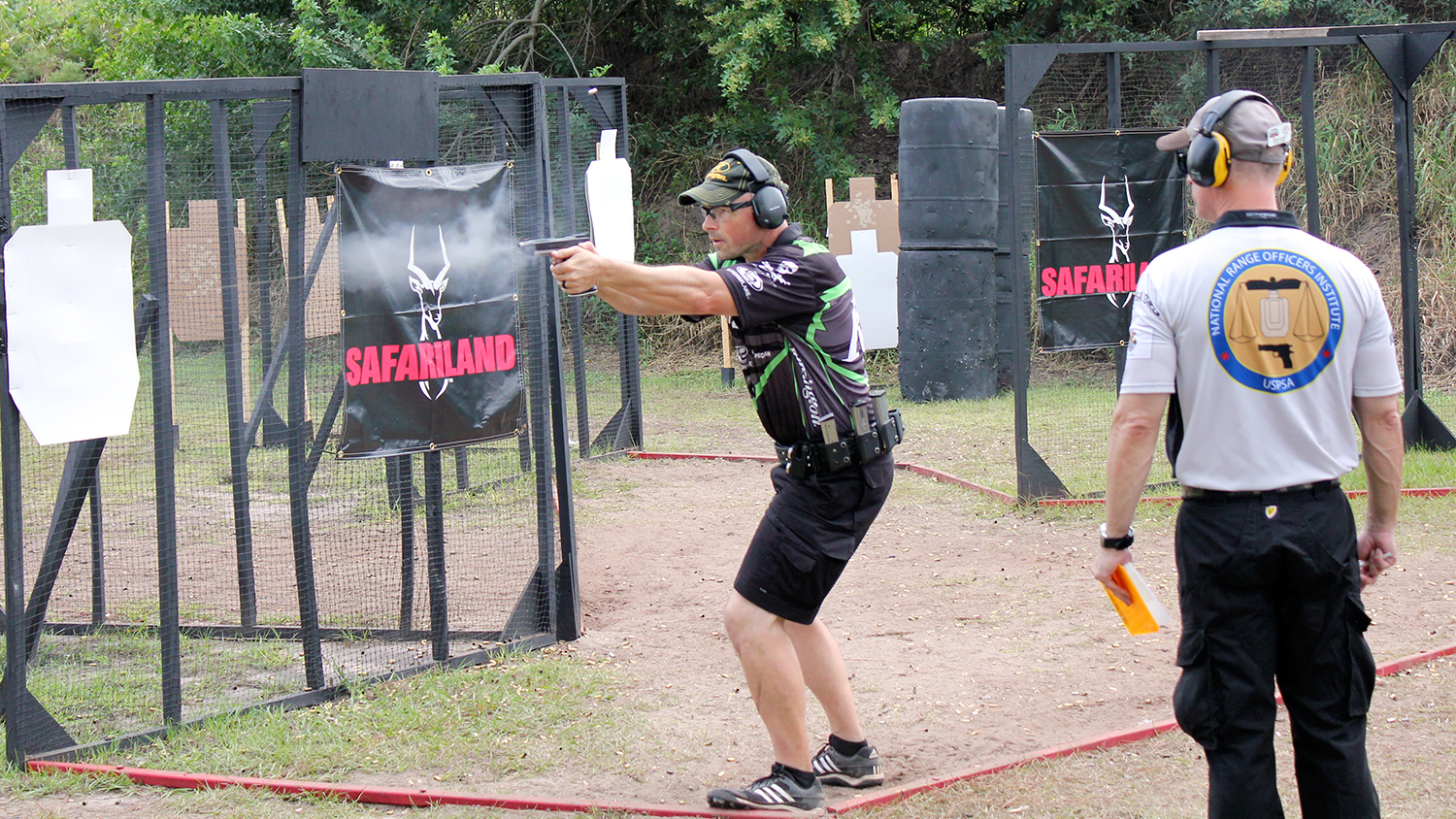
In 2002, I made the U.S. National Team to represent our country at the IPSC World Shoot in South Africa. One of my teammates was top shooter and AMU member, Max Michel. Max invited me down to Ft. Benning to train with him at the AMU facilities in preparation for the World Shoot. At the range, Max and I just clicked. It was abundantly clear that we were both “students of the game,” and shared the passion to become the best practical shooter alive. We’d spend hours analyzing every facet of technique—and constantly pushing each other in accuracy and speed. By the end of the week, my primary focus was to be selected to the Army shooting team. In one of the greatest opportunities of my life, I earned a slot in mid-2003 and proudly enlisted in the U.S. Army.
One piece of advice for aspiring AMU shooters is to let the team know you’re interested, and don’t let them forget it. Work hard on your shooting, and be persistent in your intent to earn a slot. If you don’t ask, you won’t receive!
Q: So what was a typical day like on the AMU?
A: When I first arrived, the mission statement of the unit was, “To win in national and international competitions.” That objective would shape and drive our daily routines. We’d start off everyday doing physical training as a team. This would usually include some form of cardio or agility exercises. After that, you’d head to the arms room to get your guns and the ammo bunker to grab your custom loaded ammo. The rest of the day would be spent on the range, shooting a variety of drills and courses-of-fire. Max and I had some drills that we’d run in order to monitor progress, and we'd mix these in with improvised stages in the style we predicted to see in the next tournament. With the range being on a military installation, you can imagine we’d end the day with a very thorough cleaning of the range.
If it sounds like a dream come true, it was! Believe it or not, one of the hardest parts was figuring out how not to get burned out. When you’re shooting up to 5000 rounds per week, you absolutely have to find a way to maintain your interest and desire. Your favorite hobby has now become your job.
Q: Is life on the AMU solely about shooting, or did you have other jobs during your time on the team?
A: Besides your job as a member of the AMU, you’re also an active duty Soldier. Among other tasks, you must maintain your professional development in order to further your Army career. You’re still expected to win on top of these other responsibilities, so you need to find a way to balance it all. There’s also assisting in the research and development of special weapons. The AMU has a gunsmith shop that is legendary. I’d work hand in hand with our gunsmiths to develop weapon systems to meet specific mission requirements.
As the command changes so too does the mission of the unit. As the war heated up in both Iraq and Afghanistan, my role changed from being primarily a competitor to being an instructor. So now instead of spending the day working to better my shooting, I was training the force and developing marksmanship courses. This was truly my most satisfying time in the Army. The opportunity to transfer the shooting skills I’d acquired through my life's passion to deploying troops meant more to me than any of the world or national titles.
Q: Why did you decide to leave the AMU and what did you do next?
A: My goal was always to represent a major brand as a professional shooter. The Army had prepared me well for this, and an incredible opportunity presented itself. Todd Jarrett was retiring from Para after an illustrious 20-year career. Todd chose to pass the pro shooter torch to me, and I accepted that offer with tremendous honor.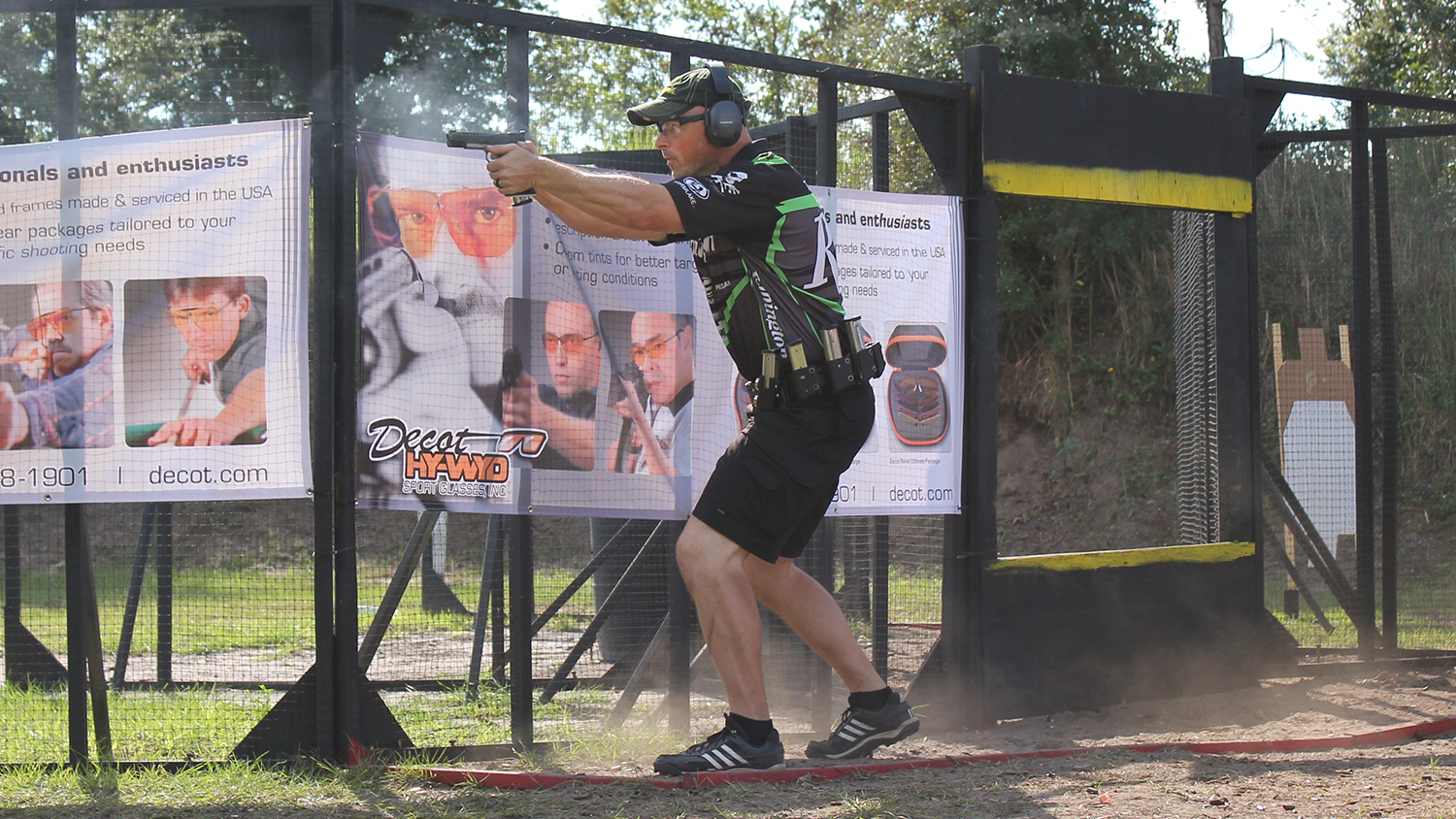
In an amazing turn of events, Remington became very serious about expanding its handgun line and acquired Para USA in 2012. This would truly become a dream come true for me. Now I was a part of a legendary brand that was firmly set on being a major player in the handgun sector.
Q: Are you an employee of Remington or a contractor?
A: I’m a proud employee.
Q: What do you do for Remington in addition to shooting matches for them?
A: I work hand-in-hand with product management, engineering, R&D, consumer service, sales, and marketing. Much to Remington’s credit, they’ve brought me into the fold and allow me input in critical areas. Due to my military and competition background, my standards are extremely high and I demand the ultimate in reliability. This is an attitude shared throughout the organization. The new RM380 is proof positive of the team and the new processes we have in place. It’s been a resounding success and we sleep easy at night knowing that the customer can rely on it to protect their loved ones.
Q: Let’s make the nice Remington marketing people happy—tell us what makes the RM380 so special?
A: The RM380 is Remington's new micro handgun. Our design approach was to develop a small pistol that would feature incomparable reliability, combined with refined “shootability” not commonly found in its class. We were able to achieve this through the use of superior engineering, precision manufacturing, and premium components. Instead of using a polymer frame, we used 7075 aluminum for added durability and reduced felt recoil. The trigger guard is undercut to allow a higher grip on the gun and ultimately less muzzle flip. The double-action only trigger allows for restrike capability and the magazine catch is ambidextrous. We also implemented a fully functioning slide lock, and fixed no-snag sights.
Another remarkable feature that sets the RM380 apart is the extremely light slide-racking force. This enables anyone, regardless of hand strength, the ability to rack the slide to chamber a round.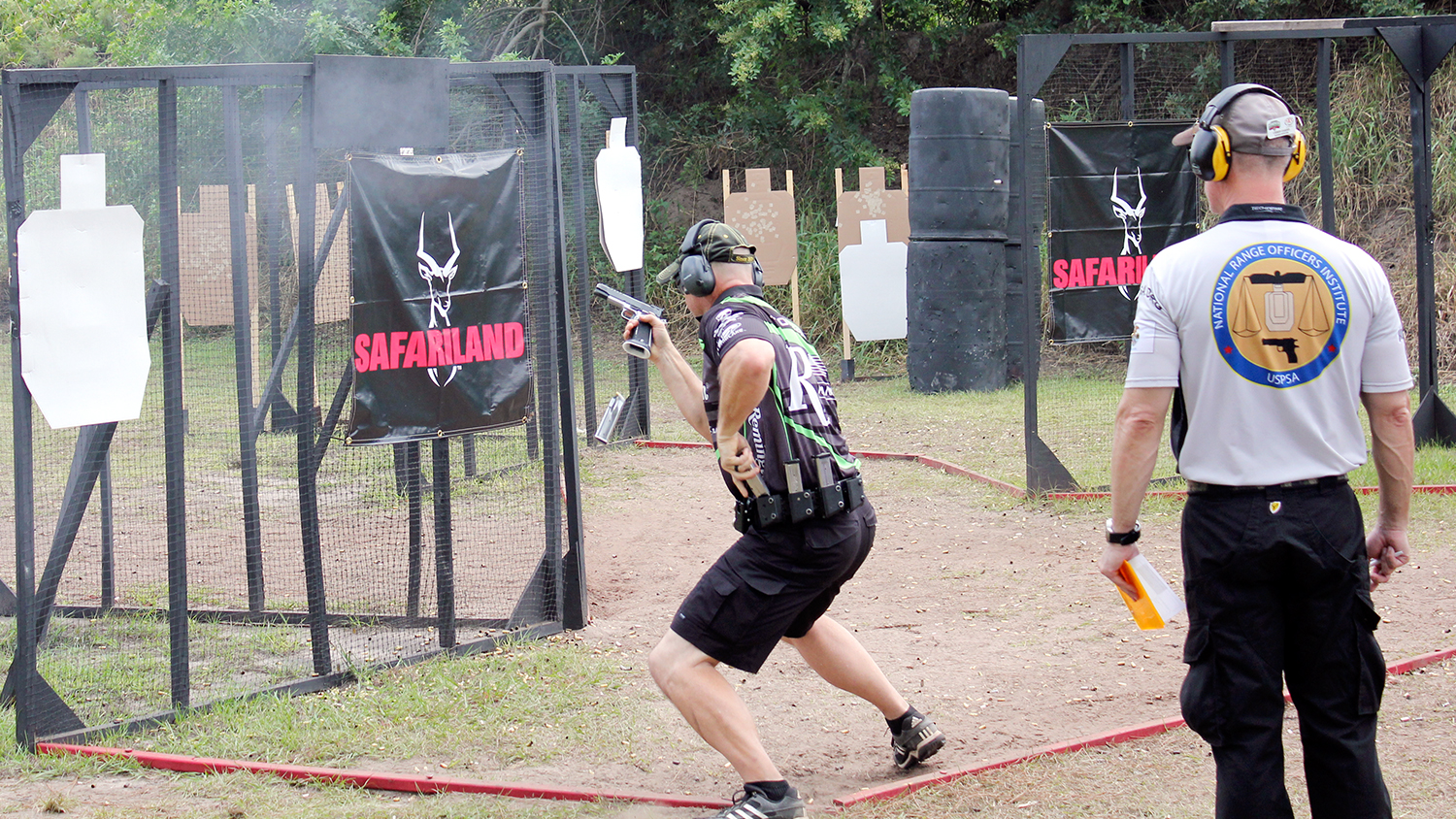
Q: What shooting sports do you compete in and what equipment are you using?
A: As mentioned earlier, I compete in USPSA and IPSC. The practical shooting sports are unique in their blend of speed, power, and accuracy. The courses-of-fire are primarily designed around real-world situations. I can think of no better way to develop your shooting and gun-handling skills than to actively participate in the practical shooting sports. Besides that, it’s incredibly fun and fulfilling!
The element of speed means you always have room for improvement. For example, you may shoot the maximum points available on the targets, but you could have been a second faster. Likewise, perhaps you burned the stage down with the fastest time, but you dropped 10 points on the targets. Well, you could have certainly been more accurate. On top of all that, the safety rules are second to none in promoting muzzle awareness and trigger finger discipline. I don’t think this aspect of the sport can be overemphasized. Safe gun-handling literally becomes engrained in your psyche.
For equipment, I rely on the Remington 1911R1 lineup. I’m currently using my prototype signature model, the upcoming “Remington 1911R1 Tomasie Custom,” in both USPSA and IPSC. This is a double-stack 1911 that’s rich in custom features, such as a bull barrel, lightened slide, PVD finish, and premium components. My ammunition of choice is Remington UMC, for its combination of exceptional accuracy, reliability and consistency. Matches are won or lost by literally less than a point. Therefore, I demand the best guns and ammo I can get my hands on!
Q: We know that shooting is a perishable skill. What sort of training are you doing to keep your edge up and to remain competitive?
A: Nothing beats live fire training. When I’m on the range, I perform a series of drills that build and hone my fundamentals. Skills such as recoil management, accuracy, target acquisition, and shooting on the move. In addition to these, I build random courses-of-fire you’re likely to see in an IPSC match that test a combination of skills. You’re only as good as your weakest link, so I actively seek opportunities to work on aspects of my game that are not where I deem they should be. I feel it’s important to always use goals to drive your training sessions. For me, these goals will be based on weaknesses exposed at matches. I supplement my range time with a dry fire routine that covers gun handling techniques such as draws, reloads, and movement. I view dry fire as the homework and live fire as the test.
Q: What do you recommend to people who want to get started in practical shooting?
A: Begin by finding a local club that holds matches in the discipline you wish to participate in. The USPSA, for example, has a “club finder” on their homepage that makes this really easy. Although attending your first match can be intimidating, you’ll quickly find the shooters and club members to be extremely accommodating and helpful. They’ll go out of their way to make you feel welcome. You can even go out and spectate and get a better idea of what you may need in terms of equipment and ammo. For your first match, just focus on safety, stay relaxed, and have fun. You’ll quickly be hooked!













